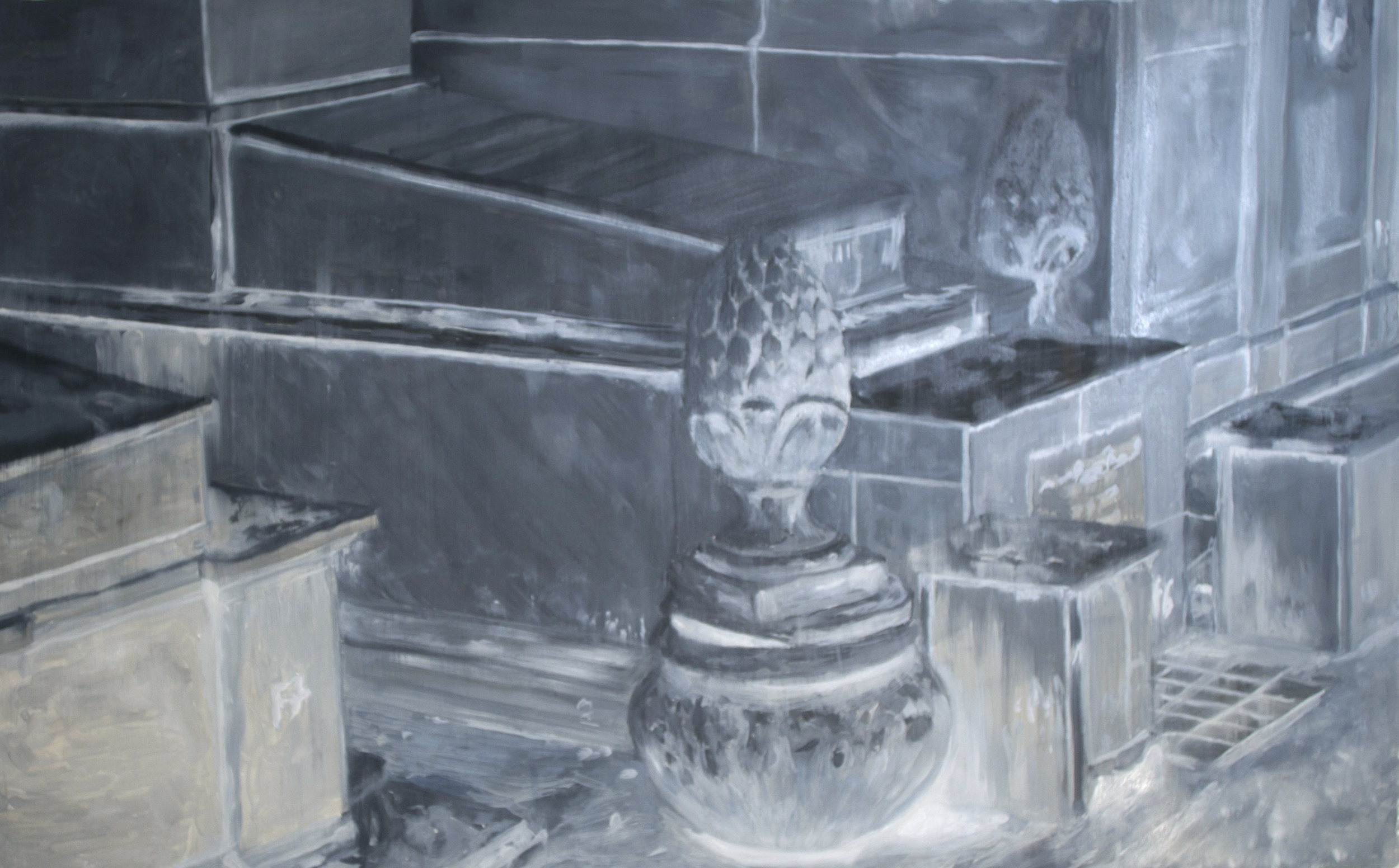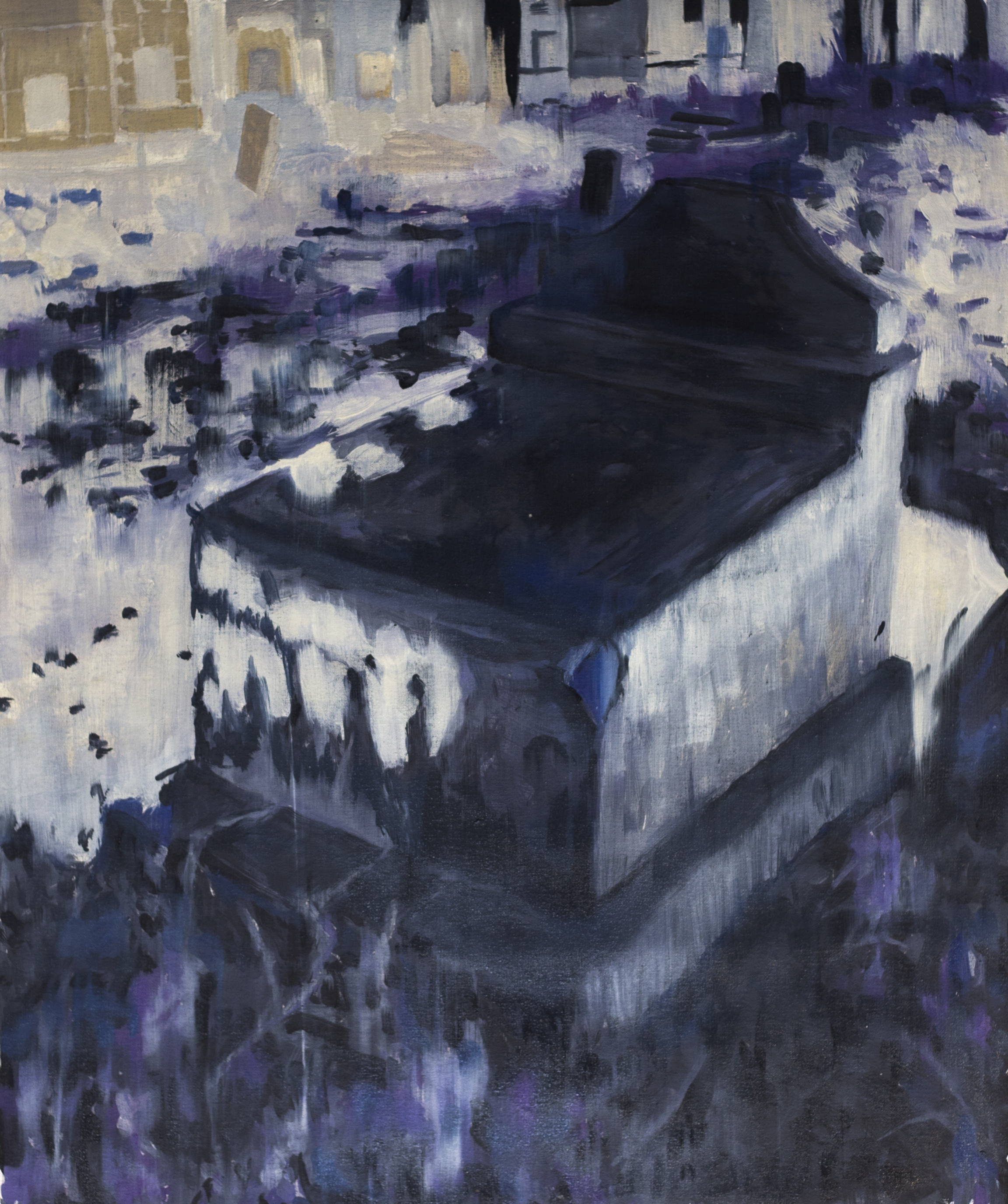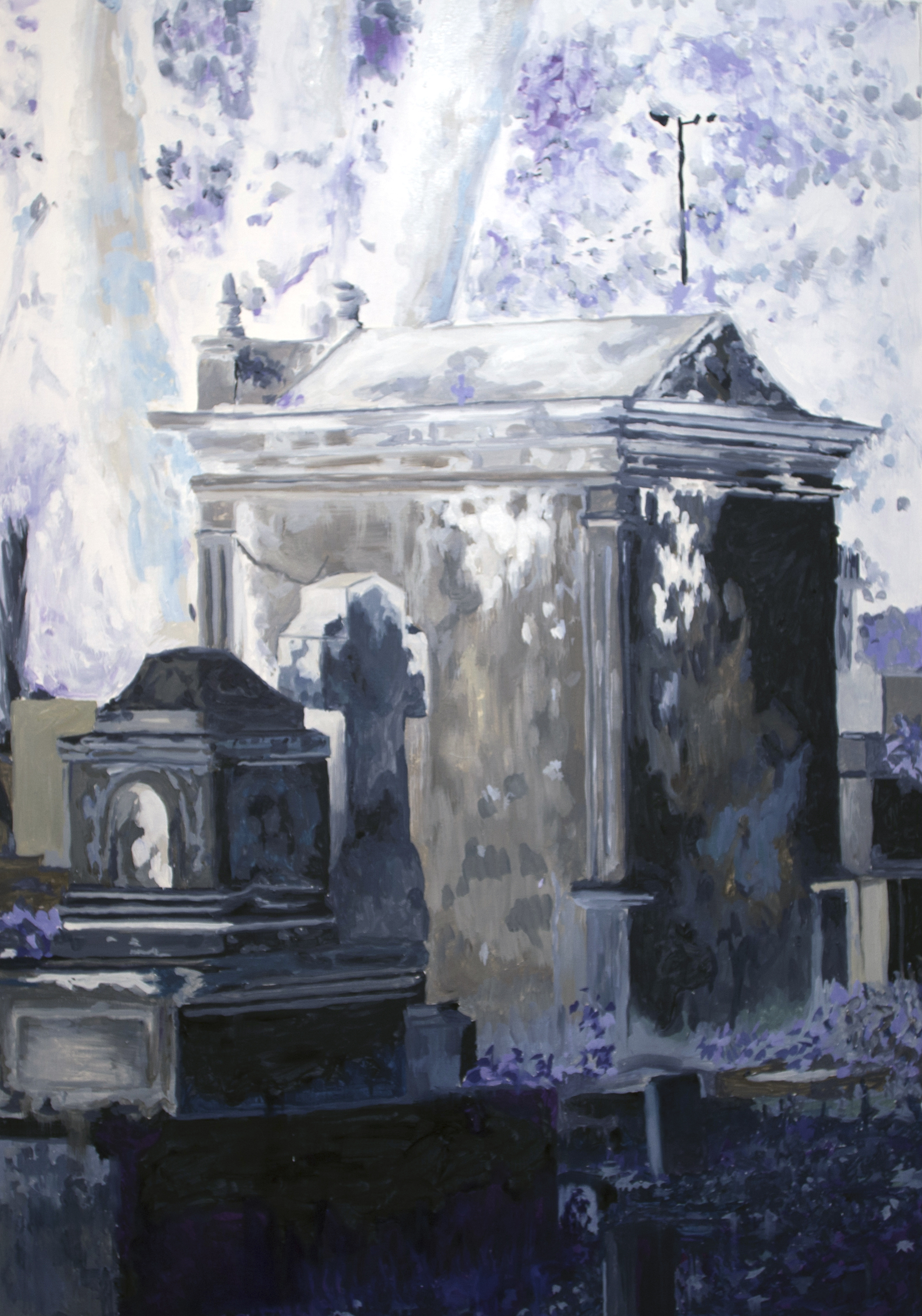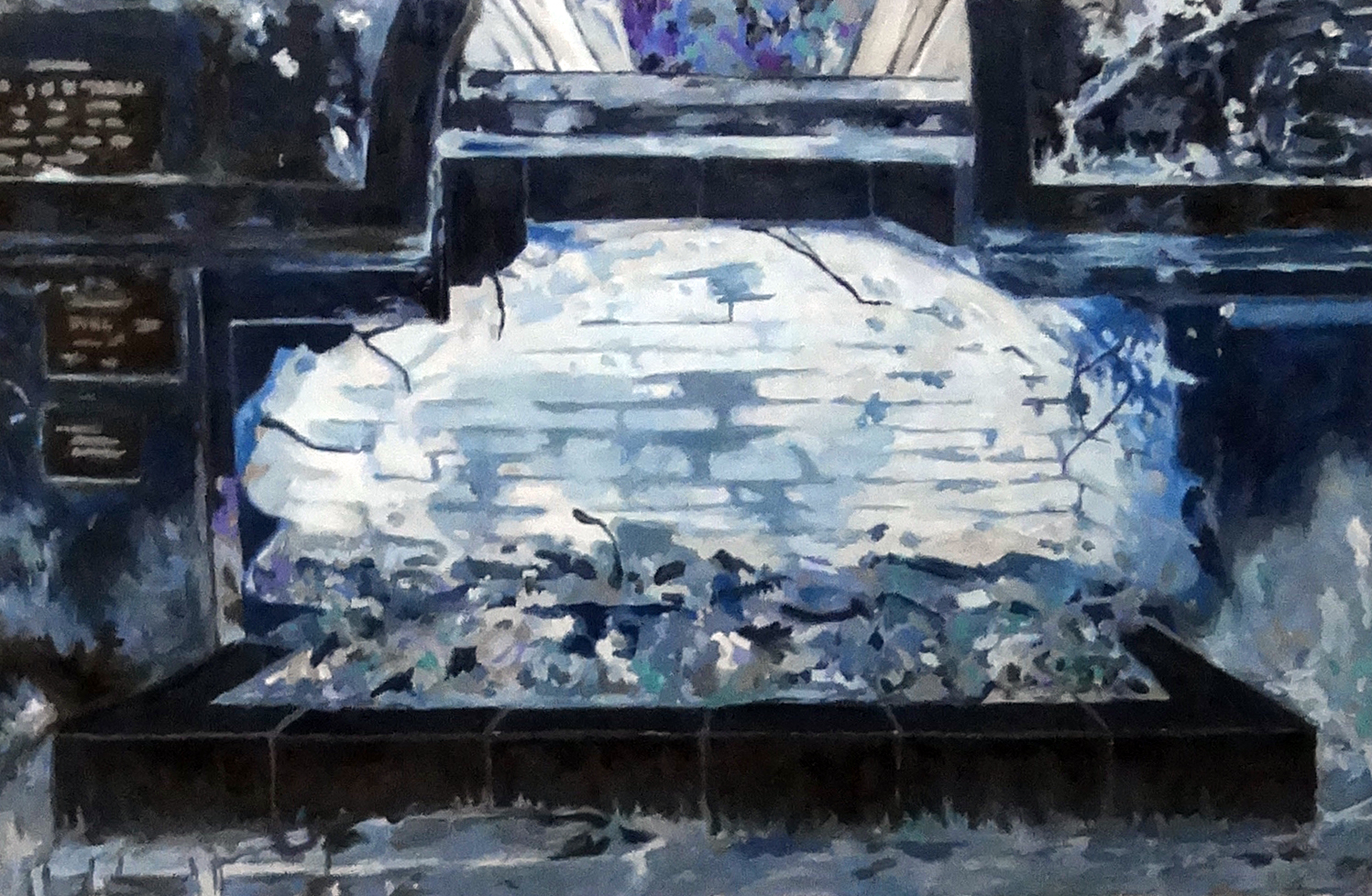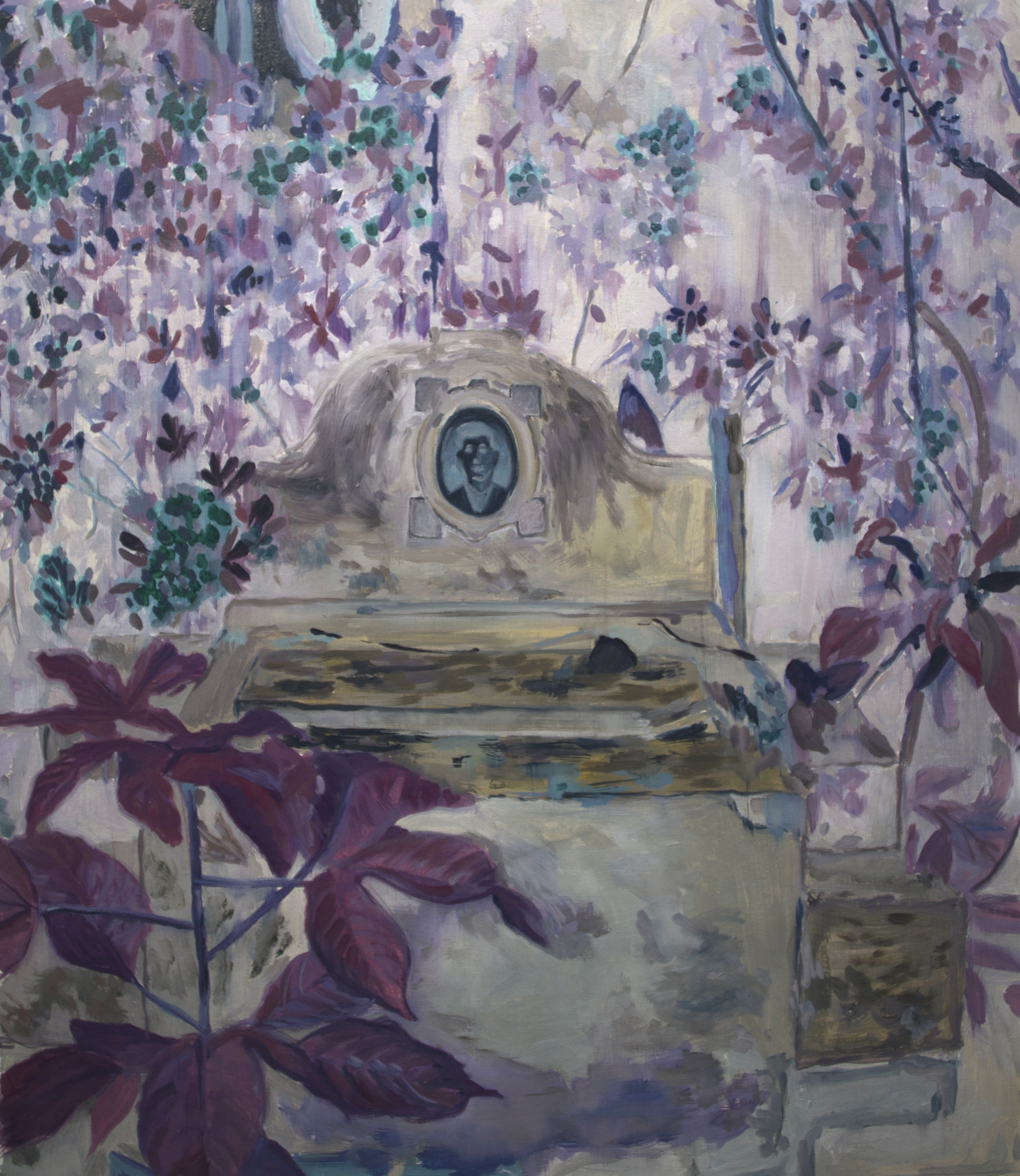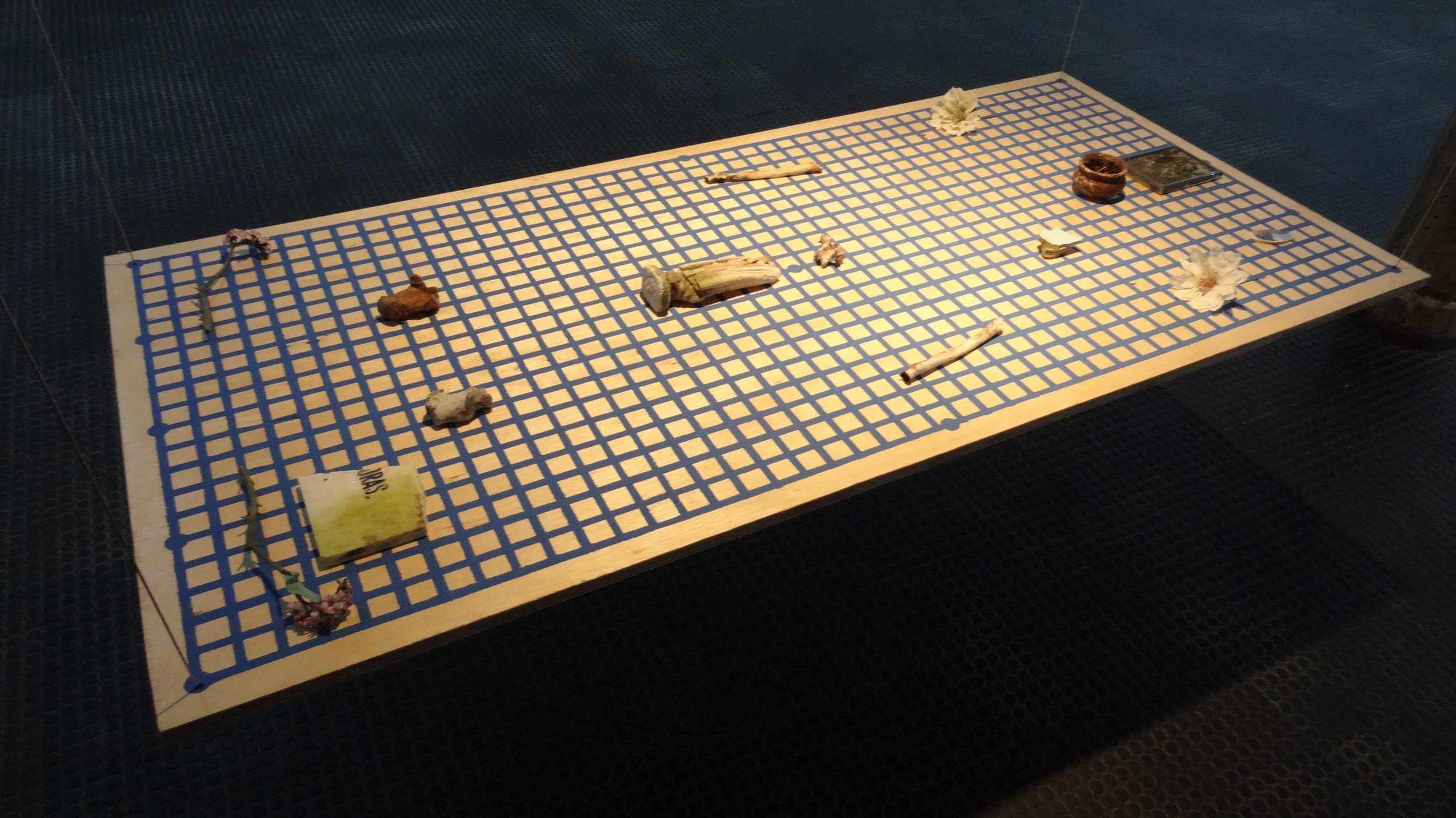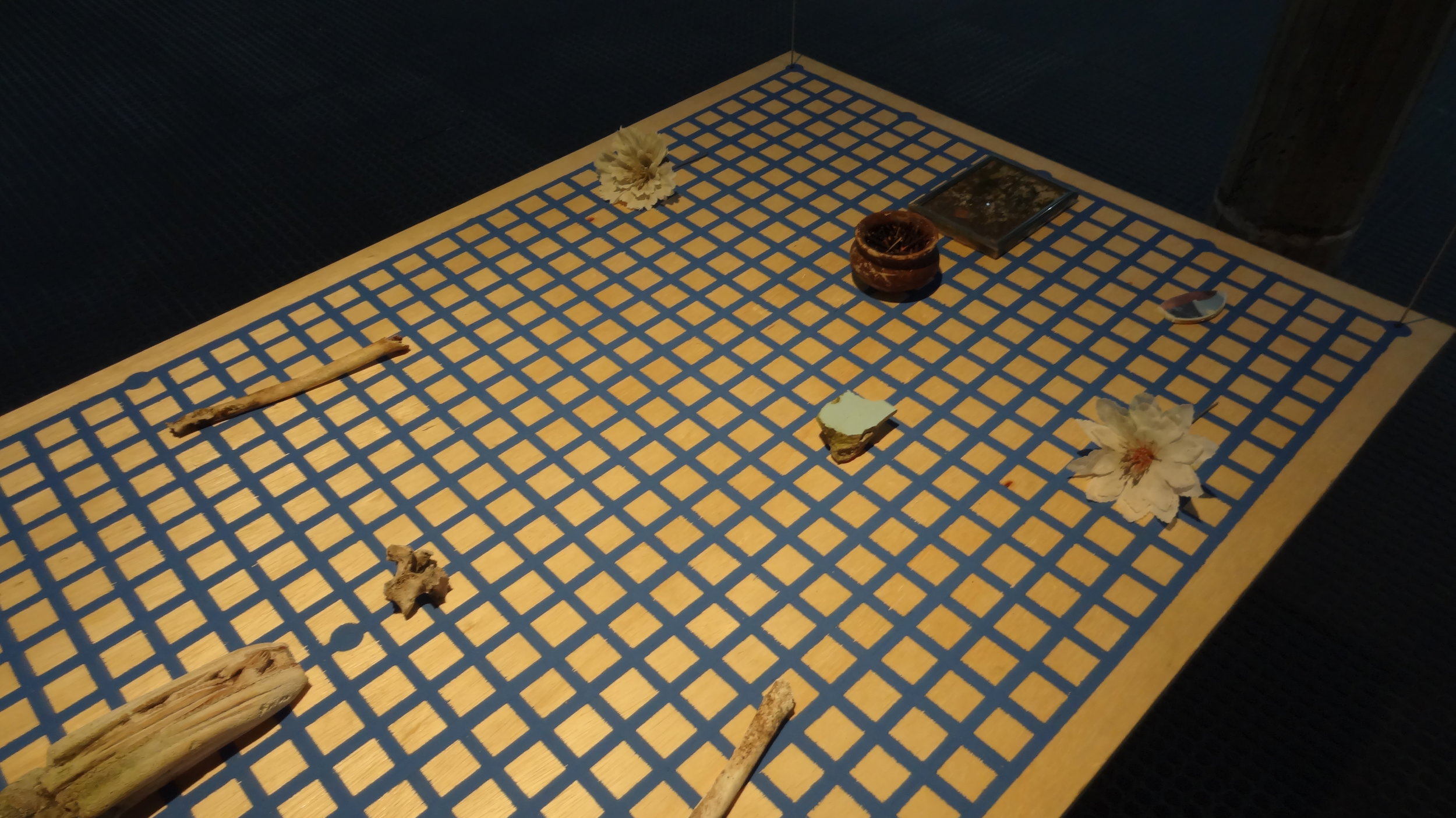Luzia: Joaquim Nabuco Foundation, Recife - Pernambuco, Brazil (2017).
The research “Heterotopies: the city of the dead", was carried out within the Joaquim Nabuco Foundation Residency Program. Its focus was Senhor Bom Jesus da Redenção cemetery, in Recife, popularly known as Santo Amaro cemetery because of the neighbourhood in which it is located. Considered by Gilberto Freyre as one of the first and most elaborate cemeteries in Brazil, it has a gothic-style chapel in the centre of a radial architecture that divides the grounds in lots. Hundreds of graves, tombs, mausoleums and crypts amalgamate the time inhabited by surnames. Many generations share the land of this small and silent city. There you can see images of dead faces of youngsters with greased hair engraved in white enamel ellipses or a name hastily scribbled in pencil on the wall of a newly sealed crypt. A flowerbed nurtured by the winter rains sits alongside another one containing plastic flowers.
From the negatives of more than seventeen hundred photos taken in the necropolis during the research project, a small batch was used as a model for oil paintings on canvases of various sizes. These canvases are shown as flags flickering on the walls. The inverted colours and shades seem to electrify the funerary structures of cement, lime, tile and marble. The abundant vegetation does no emanate hues of green, but a chemical purple, feminine and intoxicating. The cemetery pulses under the light of a black sky and time stubbornly comes to a standstill. These images refuse to transcribe, as paintings, what the photographs retain so precisely, erasing part of their references and offering, in return, vaguer impressions of the researched object. A detachment from the documental that generates a sensitive knowledge that only opacity can create.
Two other works complete the exhibition. The first one is an ensemble of fragmented objects - pieces of bones, graves, vases, saints, china, flowers - arranged on a suspended surface that reminds us of the body of someone who is no longer lying on an empty bed, the inventory of a forensic inquiry that, through remains and traces more than unequivocal evidence, represents a person or a fact. The second piece - an audio work - seems to evoke days of rough sea or thunder building up before winter showers. A sound that seems to come from a future in which humans are extinct and everything crumbles in succession. A time in the future where the old and porous cement of the cities will collapse and nothing will avoid the disintegration of the structures. The foundations will be swallowed at one go by the ground. It is not an apocalyptic prophecy or a simple pessimistic vision, but the real fate of the materials that build lives.
"Luzia", the name of the exhibition, is a women's name. In Portuguese, it is also the past tense of a verb with many meanings.
Victor Mattina, with contributions by Moacir dos Anjos
Curator: Moacir dos Anjos
Translation: Marcello Lino
